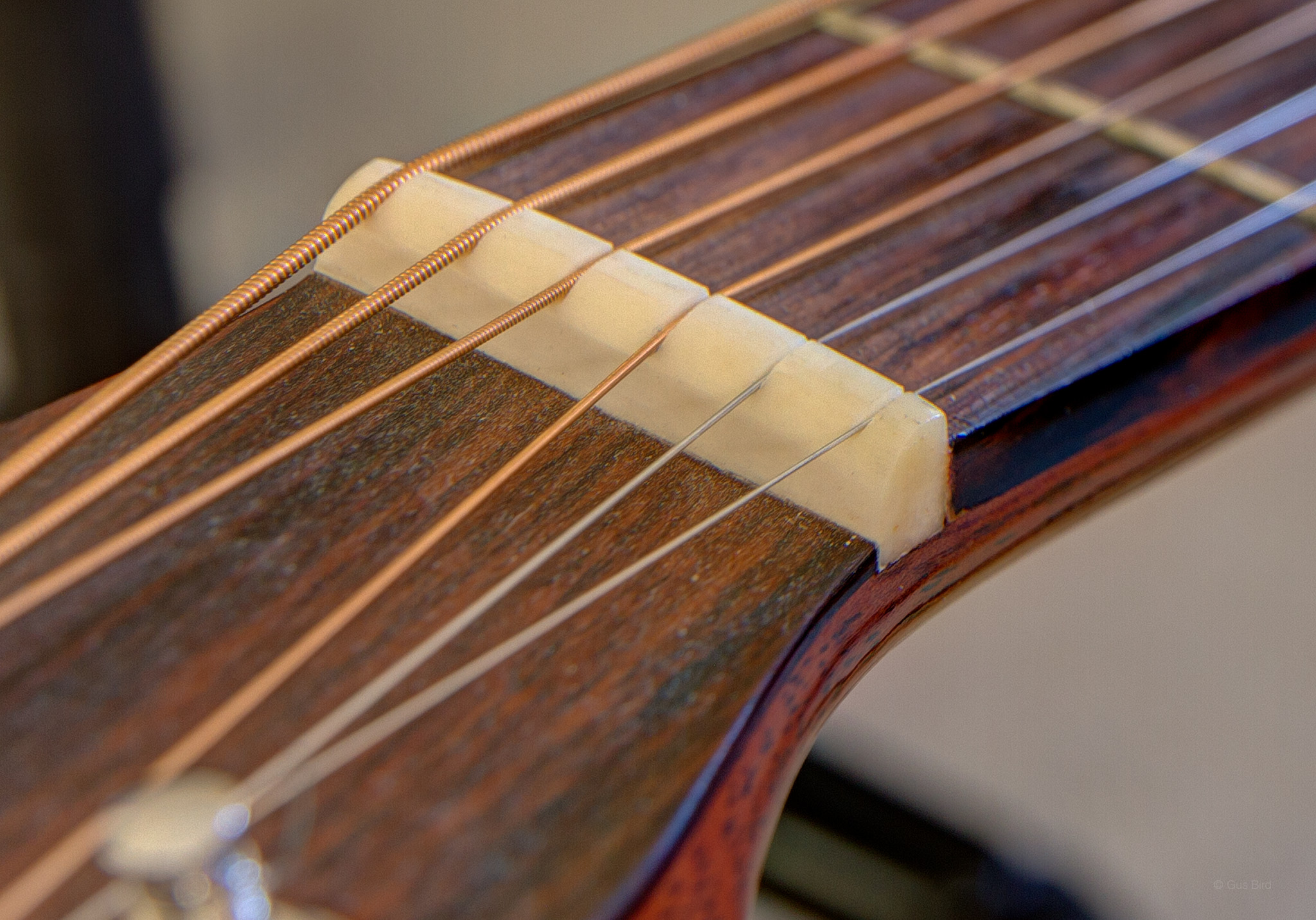Guitar Nut Work
The typical Martin guitar nut shown here on a left-handed D-18. Martin angles the base with two parallel vertical sides and a large top radius. This can give the impression that the nut needs to "dovetail" in from the side (like an old Fender fret) but actually it drops straight down into the slot. I've stop doing these Martin nuts from complete scratch because StewMac sells a nice oversize un-slotted, natural bone blank with the correct angle and radius. These strings may look (be cut) a bit "deep" but they were actually slotted at the factory. The distance between strings is equal and the setup and height relative to the frets is good.

Making a guitar nut is both an art and a science — it plays a vital role in tone, playability, tuning stability, and string spacing.
Nut materials, each has tonal characteristics:
Bone - Bright, clear | Traditional, durable | Harder to shape
Graphite - Mellow, lubricated | Good for tuning stability | Softer
Plastic - Neutral, duller | Cheap, easy to work | Wears quickly
Brass - Bright, metallic | Long sustain | Can be harsh-sounding
Tusq - Balanced | Consistent, synthetic | Less traditional
String Spacing
There are two main methods for setting string spacing on the nut: Equal Center-to-Center Spacing
All strings are spaced evenly *from center to center.
Easy to lay out.
Not ideal for comfort because thicker strings feel more crowded.
Equal Edge-to-Edge Spacing (Compensated Spacing)
Spacing accounts for string gauge.
Thicker strings are spaced slightly farther apart on centers.
Provides even feel to both left and right hand.
Compensated spacing feels more balanced, especially for players who do a lot of fingerstyle work.
1. Decide overall nut string spacing (E-to-E width).
2. Account for string gauges.
3. Use spacing calculators or create a proportional layout based on string diameters.
Common Nut Widths and E-to-E Spacing
Guitar Type | Nut Width | E-to-E String Spacing |
Fender Strat/Tele | 1.650” | \~1.365” |
Gibson Les Paul | 1.695” | \~1.375” |
Classical | 2.000” | \~1.680” |
Acoustic Steel String | 1.750” | \~1.420” |
Note: These are approximate and vary. A poorly cut nut can ruin even a perfect setup. Lubricate slots (graphite or nut lube) to reduce string binding.